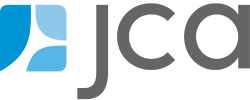Putting your Best Numbers Forward with Sales Forecasting: Part 2

Jennifer Nemeth
Manager, Professional Services
It’s that time of year again, when many of us are thinking about forecasting sales for the upcoming season. Each new season brings unique challenges, so how can you make sure that you’re creating the most effective forecasts possible?
Your most important asset for forecasting is the data you already have at your disposal from past performances. Using past data, you can predict how your audience will behave, what they’re most interested in seeing, and how much they’re willing to pay for it. The trick to successful forecasting is recognizing which past performances were most like your upcoming performances, then using that data to inform your predictions. But, choosing the right performances for comparison can be tricky!
One of the biggest pitfalls in forecasting is making assumptions about which criteria to use when comparing performances. We want to avoid assumptions, so always let your data be your guide! To make sure you’re using the right comparison criteria, let’s examine a few common ones, and how to determine if they’re right for your organization.
PART 2 – PROGRAMMING
There are a lot of elements to programming that could affect sales, but just like with timing, it’s important to recognize which ones actually do at your organization. As marketers, we can become focused on one element, like the playwright or the soloist, but it’s critical to understand which aspects have an effect on your audience’s choice. The audience might be making choices based on play content over playwright, program over soloist, or title over lead singer.
To make sure you’re using the right aspects of programming when creating a forecast, again—gather data! Try grouping together performances by different commonalities, such as:
- a popular lead or celebrity
- the same conductor, choreographer, playwright, or composer
- a similar theme or topic
- a genre (comedy, drama, modern, classic)
And then compare those performances to others.
Are they noticeably different? Similar? What trends can you recognize? Use those trends to determine which factors to use in your forecasting. If you discover that a certain programming factor typically has a positive (or negative) effect on sales, use it! If not, try other criteria until you find some that do.
Read Part 3 of our 3-Part Series on Sales Forecasting, where we discuss how Financial Considerations can impact forecasts.
Want to make better, faster forecasts?
We’re here to help. Our JCA Arts Marketing consultants can leverage our advanced tools (such as the recently released Revenue Management Application v6) to help you easily create accurate, data-driven sales projections. Contact us to learn more.
JCA Arts Marketing collaborates with cultural organizations to increase revenue, boost attendance and membership, and grow patron loyalty. We provide consulting and software services to hundreds of cultural institutions across multiple genres, including dance, museums, opera, performing arts centers, symphony, and theatre. We can help you achieve your marketing goals.

